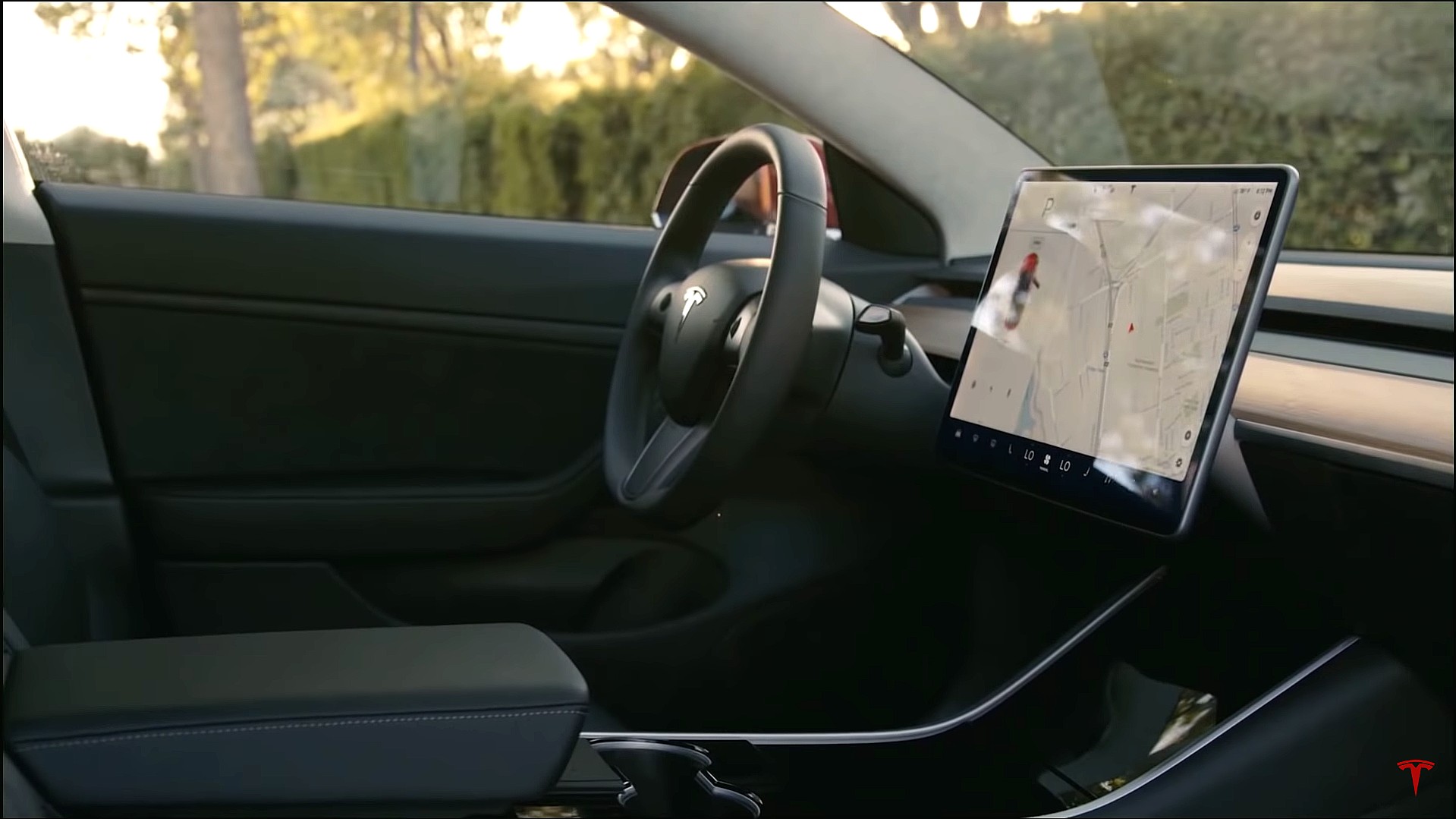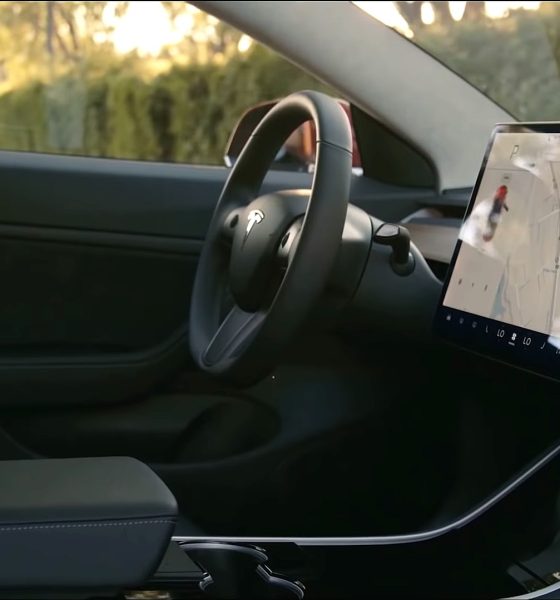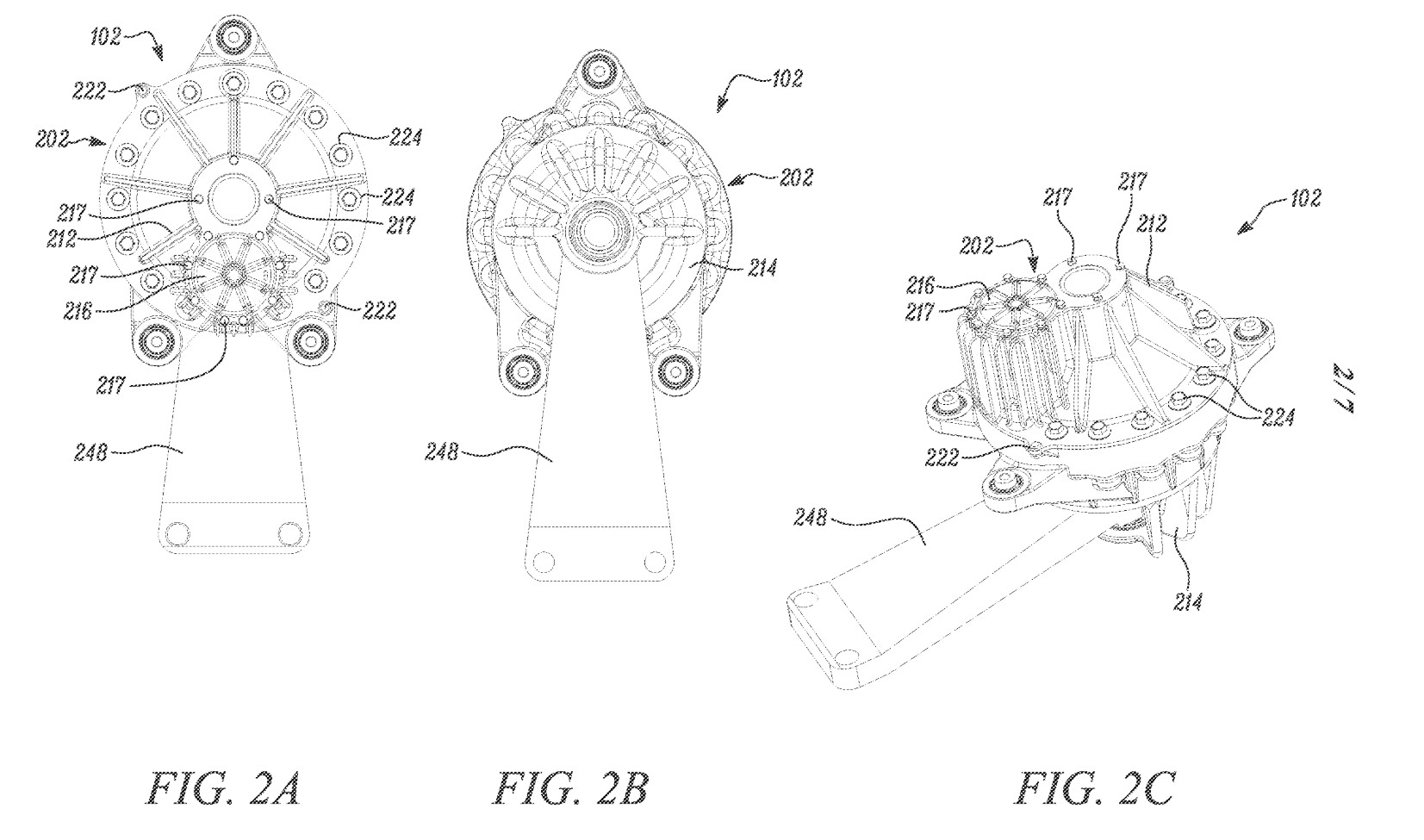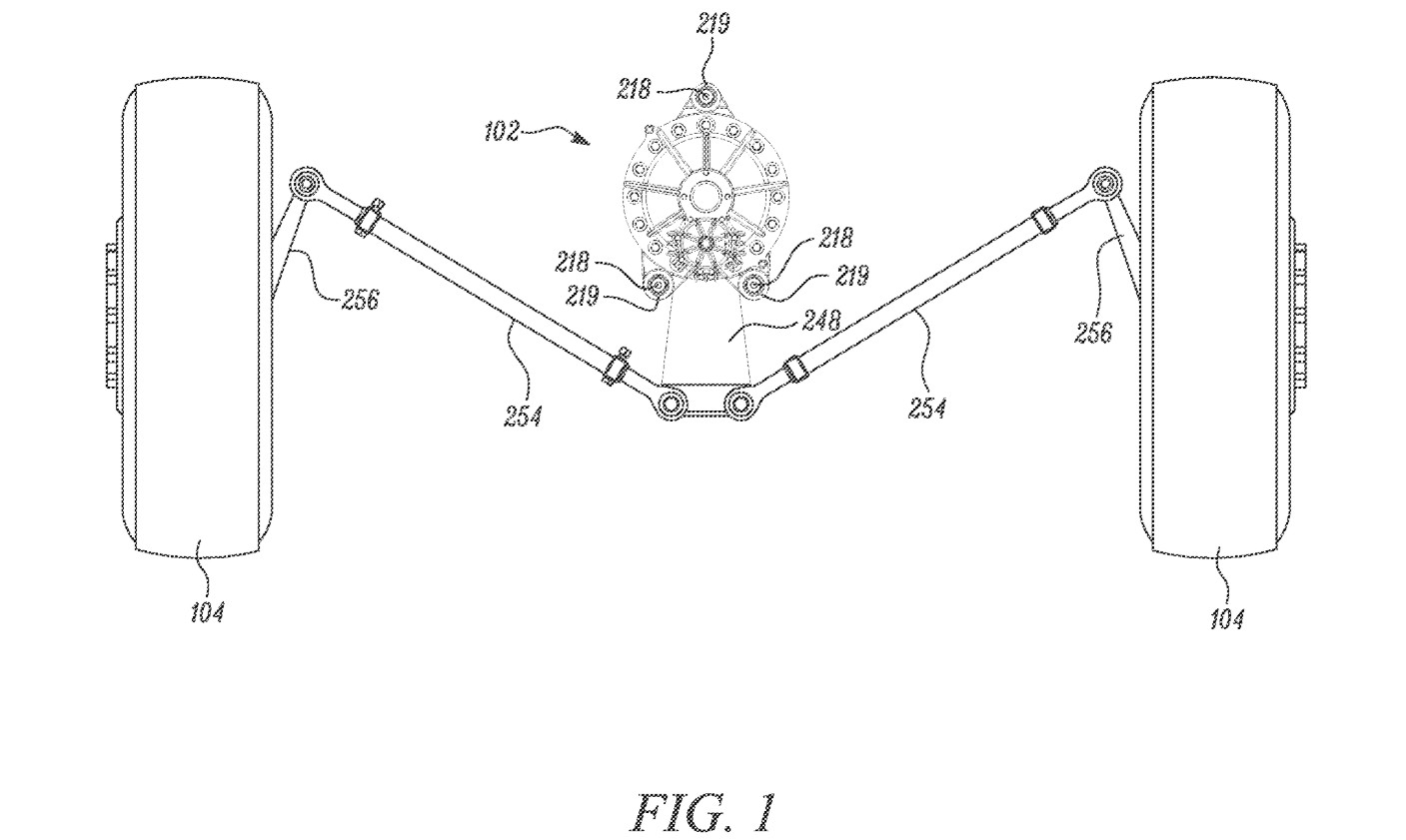

News
Tesla points to better range and efficiency with compact power steering patent
Tesla’s electric cars are already among the most efficient vehicles on the market, and this is shown by the immense gap between the range and efficiency of the company’s vehicles compared to their competitors from veteran automakers. Part of the reason behind this is Tesla’s continued improvements in its vehicles, which are rolled out and adopted as soon as they are refined and ready.
One of these improvements appears to have been teased in a recently-published patent application. Simply titled “Steering System for a Vehicle,” the document describes a smart, novel way of designing a power steering system that is more compact and less power-hungry. In the patent’s background, Tesla remarked that conventional power steering systems, which are usually hydraulically operated, are mostly bulky and space-consuming.
This is due to power steering systems utilizing a number of components that include cylinders, pumps, hoses, and control valves, to name a few. Hydraulic power steering systems also have complex designs, which add cost to a vehicle. Lastly, conventional power steering systems generally require a large amount of power to function. With this in mind, Tesla argues that there is a need for a new power steering system that is simpler, smaller, and more power-efficient.

Tesla’s novel power steering design involves fewer parts than the conventional system used in most vehicles. The electric car maker describes the design in its patent in the description below.
“The steering system includes a drive motor having a motor shaft. The steering system also includes a first gear reduction stage for receiving a first rotational input from the motor shaft and providing a first rotational output. A first gear meshes with a second gear of the first gear reduction stage via a helical gear mesh. The steering system further includes a second gear reduction stage for receiving the first rotational output from the first gear reduction stage and providing a second rotational output.
“The second gear reduction stage may include at least one of a strain wave gearing, a worm drive, and a planetary gearing. In case the second reduction stage is a strain wave gearing, the second gear reduction stage includes an ovular coupler, a flexible coupling, an outer spline, and a plurality of bearing members disposed between the ovular coupler and the flexible coupling. The steering system includes an output shaft for receiving the second rotational output from the second gear reduction stage.”
Tesla notes that its smaller, power-saving steering system, apart from being more power-efficient and compact, also includes several failsafes, which could, in turn, increase a vehicle’s safety. The company’s patent mentions “sacrificial or failsafe components,” which are designed to safeguard a vehicle’s sensitive components during the event of a breakdown. Such a design will likely contribute to Tesla’s electric cars and their already-stellar safety ratings.

“In some embodiments, steering system 102 has been shown to provide a 10% improvement over a hydrolytic steering system. Additionally, steering system 102 is a compact unit that consumes lesser space as compared to other steering systems that are commercially available in markets. Further, steering system 102 does not require large amount of additional power for operation. FIG. 6 illustrates a failure mode of steering system 102 in which one or more bearing members 244 of steering system 102 fail. Bearing members 244 of steering system 102 are designed to withstand high loads so that they do not fail during normal vehicle operation. However, bearing members 244 may be designed to withstand only a predetermined threshold of load. As a result, bearing members 244 fail when they are loaded beyond the predetermined threshold.
“For example, a bearing member 258 may eventually fail along a shear plane 260 when loaded beyond the predetermined threshold. Alternatively, bearing members 244 may undergo a bending failure, or any other type of failure. In such a situation, one bearing member 244 is a sacrificial or failsafe components, thereby safeguarding other components of vehicle, for example, drive motor 204 or an engine, against breakdown or seizing. More particularly, the one bearing members 244 fails, ovular coupler 238 locks and rotates with flexible coupling 240. Thus, steering system 102 can still be operated to allow vehicle to be driven for a certain distance and parked at an appropriate location. Bearing member 244 fails according to a sheer mechanism or another failure mechanism. Further, failed bearing member 258 can be replaced and vehicle can be reinstated without incurring any additional losses.”
It remains to be seen if Tesla’s compact power steering system will be adopted for the company’s upcoming vehicles. That being said, such a system is a perfect match for EVs such as the Tesla Semi, the Tesla Pickup Truck, and the Model S and X Plaid Powertrain variants. These are all large vehicles, and their success in the market will likely be determined in no small part by their range and efficiency. In this light, every single innovation that could optimize these vehicles’ efficiency will most definitely be appreciated. After all, the less power is consumed by subsystems such as a vehicle’s power steering unit, the more power there is to turn an electric car’s wheels.
The full text of Tesla’s compact, efficient power steering system could be accessed here.

News
Tesla FSD fleet is nearing 7 billion total miles, including 2.5 billion city miles
As can be seen on Tesla’s official FSD webpage, vehicles equipped with the system have now navigated over 6.99 billion miles.

Tesla’s Full Self-Driving (Supervised) fleet is closing in on almost 7 billion total miles driven, as per data posted by the company on its official FSD webpage.
These figures hint at the massive scale of data fueling Tesla’s rapid FSD improvements, which have been quite notable as of late.
FSD mileage milestones
As can be seen on Tesla’s official FSD webpage, vehicles equipped with the system have now navigated over 6.99 billion miles. Tesla owner and avid FSD tester Whole Mars Catalog also shared a screenshot indicating that from the nearly 7 billion miles traveled by the FSD fleet, more than 2.5 billion miles were driven inside cities.
City miles are particularly valuable for complex urban scenarios like unprotected turns, pedestrian interactions, and traffic lights. This is also the difference-maker for FSD, as only complex solutions, such as Waymo’s self-driving taxis, operate similarly on inner-city streets. And even then, incidents such as the San Francisco blackouts have proven challenging for sensor-rich vehicles like Waymos.
Tesla’s data edge
Tesla has a number of advantages in the autonomous vehicle sector, one of which is the size of its fleet and the number of vehicles training FSD on real-world roads. Tesla’s nearly 7 billion FSD miles then allow the company to roll out updates that make its vehicles behave like they are being driven by experienced drivers, even if they are operating on their own.
So notable are Tesla’s improvements to FSD that NVIDIA Director of Robotics Jim Fan, after experiencing FSD v14, noted that the system is the first AI that passes what he described as a “Physical Turing Test.”
“Despite knowing exactly how robot learning works, I still find it magical watching the steering wheel turn by itself. First it feels surreal, next it becomes routine. Then, like the smartphone, taking it away actively hurts. This is how humanity gets rewired and glued to god-like technologies,” Fan wrote in a post on X.
News
Tesla starts showing how FSD will change lives in Europe
Local officials tested the system on narrow country roads and were impressed by FSD’s smooth, human-like driving, with some calling the service a game-changer for everyday life in areas that are far from urban centers.

Tesla has launched Europe’s first public shuttle service using Full Self-Driving (Supervised) in the rural Eifelkreis Bitburg-Prüm region of Germany, demonstrating how the technology can restore independence and mobility for people who struggle with limited transport options.
Local officials tested the system on narrow country roads and were impressed by FSD’s smooth, human-like driving, with some calling the service a game-changer for everyday life in areas that are far from urban centers.
Officials see real impact on rural residents
Arzfeld Mayor Johannes Kuhl and District Administrator Andreas Kruppert personally tested the Tesla shuttle service. This allowed them to see just how well FSD navigated winding lanes and rural roads confidently. Kruppert said, “Autonomous driving sounds like science fiction to many, but we simply see here that it works totally well in rural regions too.” Kuhl, for his part, also noted that FSD “feels like a very experienced driver.”
The pilot complements the area’s “Citizen Bus” program, which provides on-demand rides for elderly residents who can no longer drive themselves. Tesla Europe shared a video of a demonstration of the service, highlighting how FSD gives people their freedom back, even in places where public transport is not as prevalent.
What the Ministry for Economic Affairs and Transport says
Rhineland-Palatinate’s Minister Daniela Schmitt supported the project, praising the collaboration that made this “first of its kind in Europe” possible. As per the ministry, the rural rollout for the service shows FSD’s potential beyond major cities, and it delivers tangible benefits like grocery runs, doctor visits, and social connections for isolated residents.
“Reliable and flexible mobility is especially vital in rural areas. With the launch of a shuttle service using self-driving vehicles (FSD supervised) by Tesla in the Eifelkreis Bitburg-Prüm, an innovative pilot project is now getting underway that complements local community bus services. It is the first project of its kind in Europe.
“The result is a real gain for rural mobility: greater accessibility, more flexibility and tangible benefits for everyday life. A strong signal for innovation, cooperation and future-oriented mobility beyond urban centers,” the ministry wrote in a LinkedIn post.
News
Tesla China quietly posts Robotaxi-related job listing
Tesla China is currently seeking a Low Voltage Electrical Engineer to work on circuit board design for the company’s autonomous vehicles.

Tesla has posted a new job listing in Shanghai explicitly tied to its Robotaxi program, fueling speculation that the company is preparing to launch its dedicated autonomous ride-hailing service in China.
As noted in the listing, Tesla China is currently seeking a Low Voltage Electrical Engineer to work on circuit board design for the company’s autonomous vehicles.
Robotaxi-specific role
The listing, which was shared on social media platform X by industry watcher @tslaming, suggested that Tesla China is looking to fill the role urgently. The job listing itself specifically mentions that the person hired for the role will be working on the Low Voltage Hardware team, which would design the circuit boards that would serve as the nervous system of the Robotaxi.
Key tasks for the role, as indicated in the job listing, include collaboration with PCB layout, firmware, mechanical, program management, and validation teams, among other responsibilities. The role is based in Shanghai.
China Robotaxi launch
China represents a massive potential market for robotaxis, with its dense urban centers and supportive policies in select cities. Tesla has limited permission to roll out FSD in the country, though despite this, its vehicles have been hailed as among the best in the market when it comes to autonomous features. So far, at least, it appears that China supports Tesla’s FSD and Robotaxi rollout.
This was hinted at in November, when Tesla brought the Cybercab to the 8th China International Import Expo (CIIE) in Shanghai, marking the first time that the autonomous two-seater was brought to the Asia-Pacific region. The vehicle, despite not having a release date in China, received a significant amount of interest among the event’s attendees.








